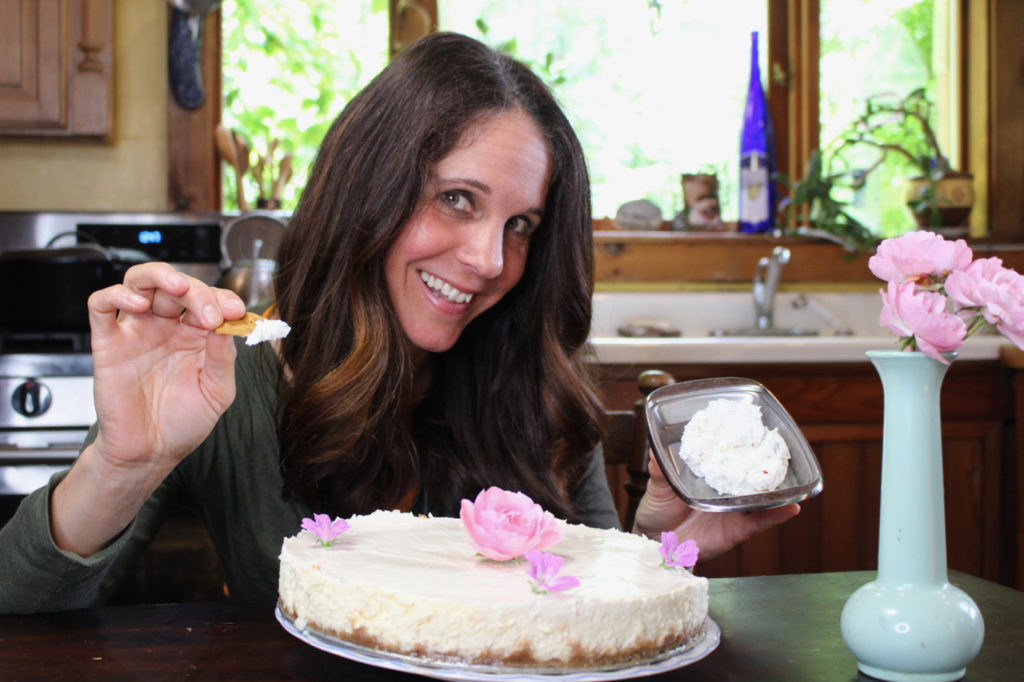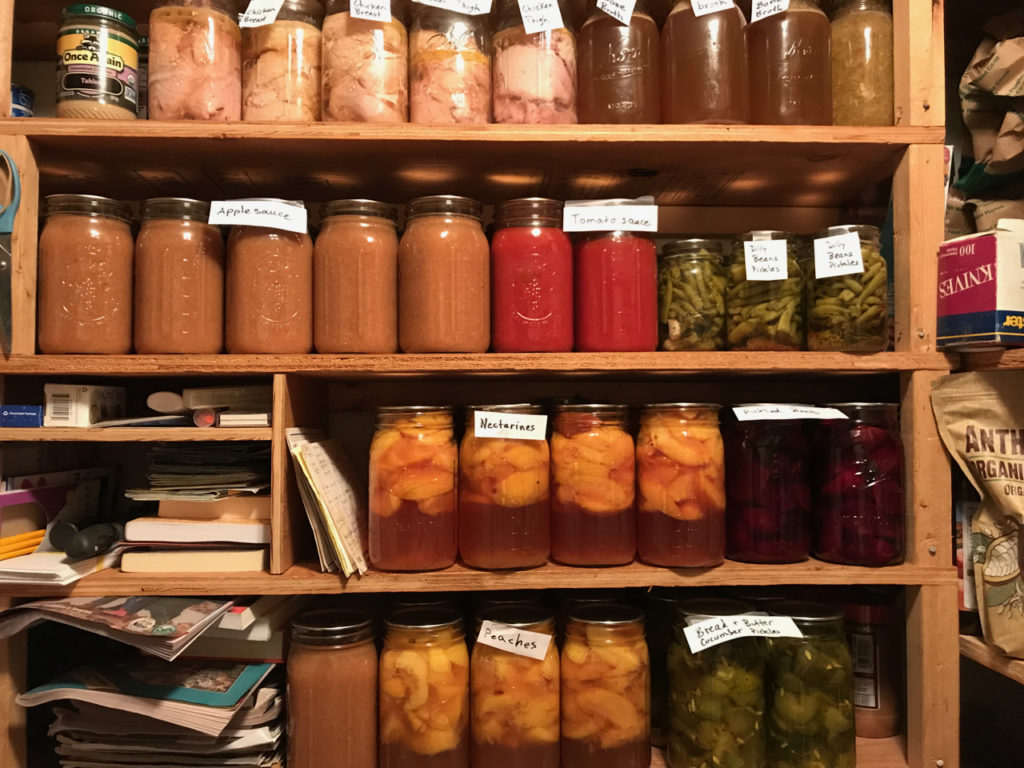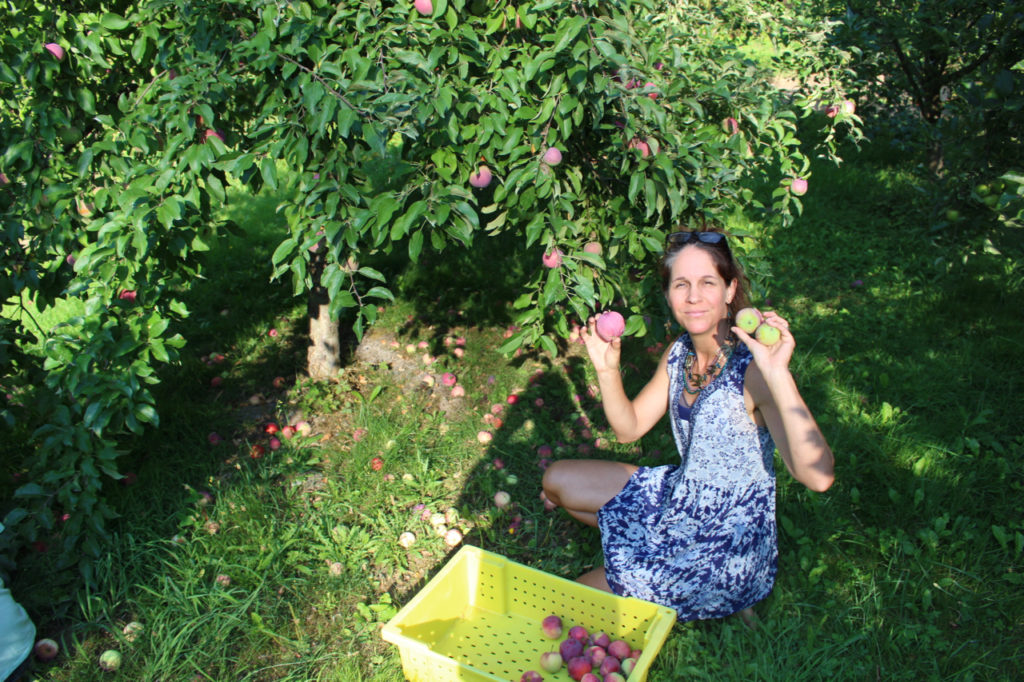How blogger Corina Sahlin went from the Alps to cheesemaking in Washington

Corina Sahlin moved from the Alps of Germany to the magnificent, wild Pacific Northwest in her twenties in search of a more adventurous life. After meeting her husband on a dairy farm in Washington, they decided to move out to the woods, with North Cascade National Park essentially as their backyard, and start homesteading.
Sahlin writes about her adventures in on her blog, Marblemount Homestead. In our Behind the Homestead Blog Q&A, she tells us about how she got started with cheesemaking, how her heritage has impacted her journey and the Swedish television host that inspired her to start homesteading.
Hello Homestead: Tell me about your background. Where are you from, and what did you do before you started homesteading?
Corina Sahlin: I was born and raised in Southern Germany, close to the Alps. We lived on the outskirts of a picturesque medieval village. My mother kept a garden, and we had ducks. She didn’t teach me her wonderful skills, but seeing her doing it planted seeds in me.
My education in Germany was very rigorous and intellectual, and I yearned for adventure. So I left Germany when I was 20 years old to be an au pair in America. The program matched me with a family in Bellingham, Washington, and I fell in love with the wild beauty there.
I worked at a shelter for abused women and children, taught German and had my own landscaping business. Then [I] studied organic agriculture, intentional communities, and cross-cultural healing at Fairhaven College.
HH: Your husband has a unique background, too. Tell me a little bit about his upbringing, and what he did before you two started homesteading together.
CS: Steve grew up in Papua New Guinea, where his parents did missionary work. They lived there until he was 10 years old, and that decade influenced him significantly. There, he saw how people survived and thrived without modern conveniences.
Upon returning back to America, he lived in urban places but always yearned for wilderness. After graduate school, he was ready for adventure and signed up for a season fishing on a crab boat in Alaska, after which he ventured to Washington state to work on an organic farm.
HH: How did you two meet?
CS: We joke that we have very romantic beginnings. We met shovelling manure and had our first date while slaughtering chickens.
After graduating from college, I took a job as a cheesemaker at an organic dairy farm. Steve was filling in at the dairy for a month because it was his off-season from organic farming.
We met for the first time in the cow barn, where our boss taught him how to use the milking machine. After milking, we shovelled manure together, and I realized what a kind, funny and smart guy he was.
Later that day, he found me in the cheesemaking room. [It was raining and] he noticed that I drove a motorcycle [to work] and asked me if I wanted to take his truck to get out of the cold, rainy commute. I said yes, and the rest is history.

HH: What inspired you to start homesteading?
CS: I didn’t watch much TV as a kid, but I remember watching a show about a woman from Switzerland living in the mountains and showing viewers how to make things from scratch. She made soap, cheese, medicine and demonstrated lots of other homesteading skills. I wanted to be like her.
HH: Tell me about your homestead. Where is it located, how long have you been there and what are your main projects?
CS: We homestead on five and a half acres in the beautiful Upper Skagit Valley, close to North Cascades National Park. Our backyard literally is wilderness with bears, cougars, wolves, elk and many other animals.
We bought the property 17 years ago – an unfinished house and property overgrown with Alder trees and blackberries. With lots of hard work, sweat and tears, it is now a gorgeous, productive place where we raise a big organic vegetable and herb garden, a large orchard with different fruit trees and several kinds of berries.
We raise dairy goats, and I make their milk into six different kinds of cheeses. We have chickens and ducks for eggs, raise chickens for meat and some years throw in pigs into the mix.
HH: When and why did you decide to start your blog?
CS: I started my blog in 2012 after falling in love with Soulemama’s blog. The idea of sharing our lives in this inspiring way felt right. I love teaching. I love writing. I love taking photos. The perfect recipe for a blog! Now, [I] have readers [from] all over the world.
HH: Where did you develop your cheesemaking skills?
CS: I like to joke that cheese flows through my blood because I was raised in prime dairy country. There were a large number of artisan cheese makers in the area where I grew up, and my taste buds got spoiled with the best cheeses on Earth.
I first started making cheese in 1999, when I milked goats and started an organic farm for a guy who was scared of Y2K and hired me to do all the work. After graduating from college, I worked as a cheesemaker at an organic dairy, where I made all kinds of cheese in much larger batches.
HH: You are also a skilled fermenter and preserver. How did you develop these skills?

CS: Again, my German heritage primed me for this. Sauerkraut is a quintessential German food. In my family, it was served as Christmas dinner (together with some awesome sausages and caraway).
The more I learned about health, the more I realized how important gut health is. I didn’t want to spent $4 for a bottle of kombucha at the store, or $6 for a quart of yogurt, and some things you can’t even buy at the store, like beet kvass. So I made my own. I learned by reading and actually doing it. I learned from my mistakes.
HH: When and why did you decide to start your online cheesemaking course?
CS: I taught cheesemaking classes at our homestead for years, but since we live so remotely, it limited the amount of teaching I could do. I was not willing to drive the two hours to Seattle or one and a half hours to Bellingham to teach classes.
People asked me to film the cheesemaking process and share it with them, so I started making movies of me demonstrating cheesemaking. I had written a book called “How to Make Gouda Cheese” and my readers were asking for visual support, so doing an online course was perfect!
HH: What would you recommend for homesteaders who also want to start teaching?
CS: Cater your teaching to what people actually want to learn. Ask your audience. Give lots of free content so people can get to know you. Make it fun!
HH: Tell me about homeschooling your three children on your homestead. Do you involve homesteading in your lesson plans?
CS: Our children are very involved in the homestead. They assist when goats give birth, help with planting, weeding and harvesting the garden, feed the chickens and collect eggs, slaughter meat birds, split firewood, cook meals from our homegrown produce and help with building projects. This way, they learn and practice science, biology, math, [physical education] and so much more.
HH: What are the greatest challenges of the homesteading life?
CS: Finding people to take care of it when we are gone can be a challenge. We love to travel, and since we homeschool, we get lots of freedom. We’ve been lucky to find people to take care of our animals and our place, but I do worry about things when we are gone.
The other challenge is the sheer amount of work and commitment it takes to homestead the way we do. The work never ends, and we need to force ourselves to sit down and enjoy the fruits of our labor. I’m certainly starting to feel my age, where I can’t do at 47 what I used to do at 20.

HH: What are you doing on your homestead right now that you really enjoy?
CS: Spring time is such an exciting time of the year! My garden is almost planted, and digging compost into the garden beds is incredibly fulfilling! I I take a crazy amount of pride in transforming goat and chicken manure into gorgeous compost. We are enjoying our home brews from our very productive own apple and pear trees that we planted almost two decades ago.
HH: What do you hope for the future of your homestead?
CS: I hope that our kids will want to come back here when they are grown. I hope they will bring their own kids here, so we can teach them how to love nature.
This Q&A was edited for clarity and length.
